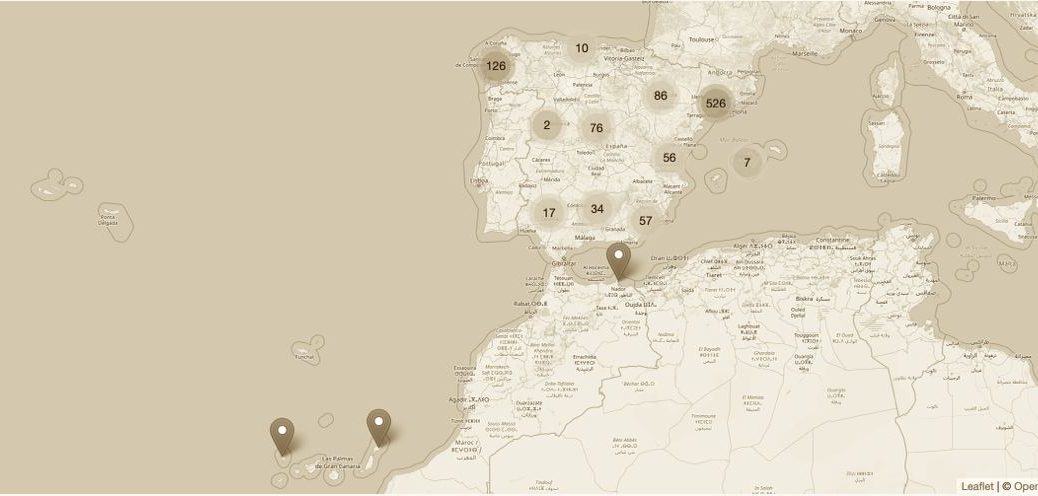We are always looking for different ways of communicating information about the victims of the Spanish Civil War and the postwar repression under the Franco Dictatorship. Today we present a geographical search engine which incorporates diverse sets of data.
This new resource was announced last month at a round table event on open data and archival heritage held as part of the Datos abiertos y patrimonio documental at the XVIII Congreso de Archivística y Gestión Documental de Catalunya and we are making this announcement on the occasion the International Day of Archives (9 June) to draw attention to the importance attached to the publication of historical data in an open and accessible format.
Martin Virtel and Guillermo Nasarre have located on a map all of the people who were killed, disappeared or who suffered retaliation for whom we have been able to trace their place of birth. This amounts to the personal files of over 82,000 records. This will make it possible to carry out geographical searches for these people. This will enable you to carry out a search using family names and place of birth. With family names we recommend that you try a variety of spellings, and especially that you try both with and without accents.
“We particularly liked working with Datasette developed by Simon Willison,” said Martin. “It is excellent for publishing data: well thought out, easy to understand and to adapt”.
“We were able to use the time which we saved by using Datasette to publish an R package to which we have given the name “limpyr”, added Guillermo [R is a programming language]. “It includes a variety of cleaning functions, such as converting the names of places, in some cases where there is more than one version of the name, into geographical coordinates.”
Geographical Search by Place of Birth
By following the link above, also accessible on our main page, you will see a map followed by a list of names. On the map there are a maximum of one thousand dots, representing people’s records. The locations are not necessarily exact and there may be more than one dot for a person if they appear in more than one dataset. The place of birth has been automatically generated based on the place name used by the author in order the increase the chances of a search being successful. We have also produced an online tutorial on how to carry out a geographical search of our database with music by Piano Accompaniment.
The people represented by the dots on the map are listed below the map. The left-hand column (columna ID) provides a list of identification numbers; if you click on one of these you can directly connect to all of the information on that person which we have in our database. If you click “Referencias” in any personal file you can find out how to access the information and/or documentation.
We think that the ability to search using family names and birthplaces will be useful in enabling many people to find out about relatives who were victims of retaliation which is frequently something of which the descendants of victims are unaware.
If you want to search for someone by first name and family names you will find that it is better to search for them using ihr.world, which provides access to all of the personal files (over 1.4 million) which are on our central database, or the new search engine which we introduced in our previous article (Nuevo Buscador de Represaliados de la Guerra Civil).
Article translated by Charlie Nurse.
